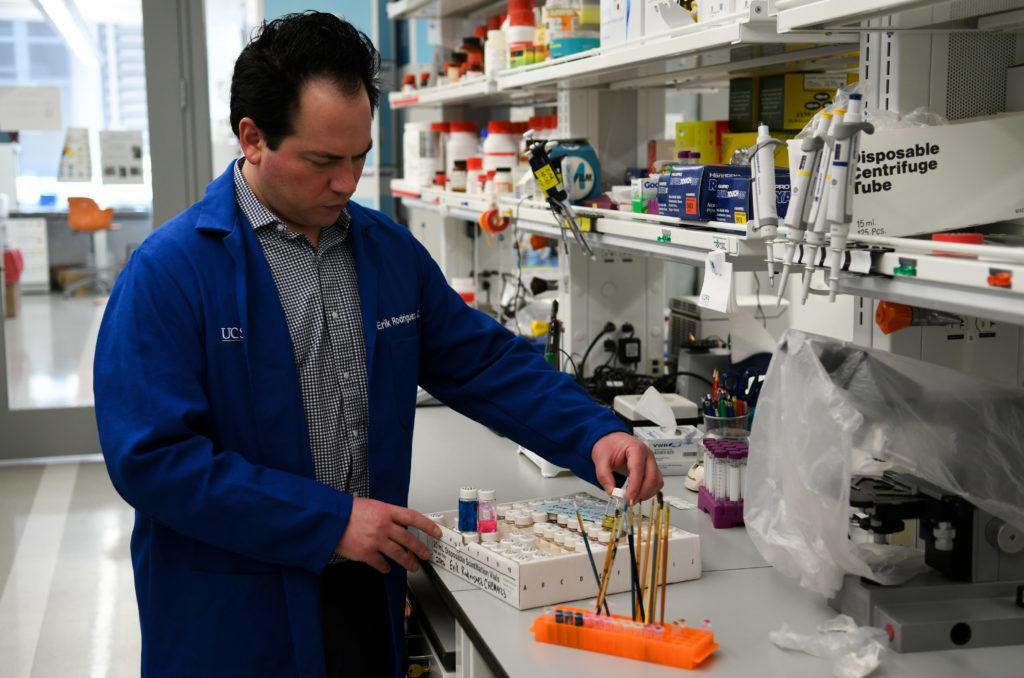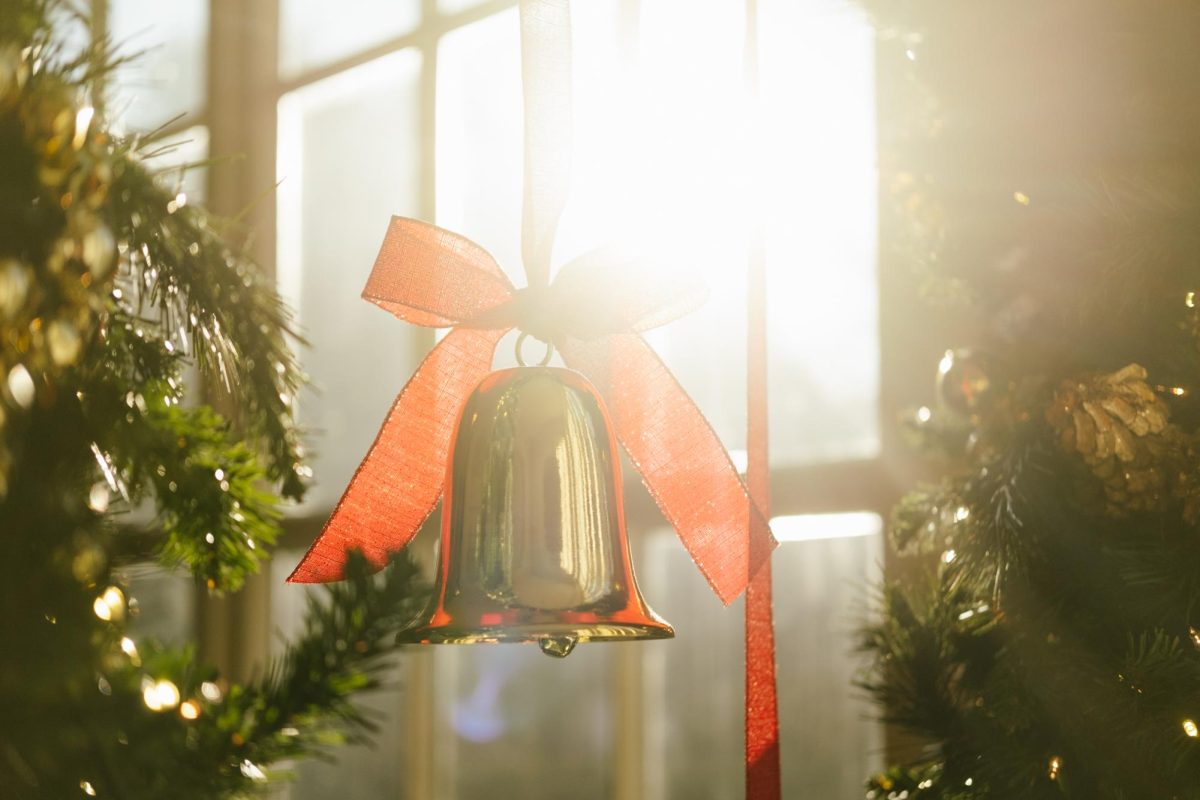A chemistry professor is blurring the lines between art and science as he lights up the lab with fluorescent protein experiments and artwork.
Erik Rodriguez, an assistant professor of chemistry, conducts research using fluorescent proteins found in organisms, like jellyfish, to light up cancerous cells to target them during certain phases for treatment testing. Rodriguez said these proteins can be used to research cancer, as well as other diseases like diabetes. When he is not using them for research, the researcher uses the fluorescent proteins to create glowing artwork.
The artistic process involves biological material found in coral, jellyfish and cyanobacteria that give the organisms red, green and cyan luminescence, respectively. Then, he takes the DNA material and injects it into bacteria like E. coli, which responds to the glowing material. The bacteria is then spread on his canvas – a petri dish – with a paintbrush.
By editing the DNA of bacteria like E. coli, Rodriguez can make the cells glow various colors as it tracks different phases of the cell cycle. He first learned the technique from his former boss at the University of California San Diego, Nobel Prize-winning biochemist Roger Y. Tsien, who introduced him to the idea of using fluorescent proteins for art.
“It takes awhile to practice but once you get good, it looks right. And you can get very good at it.”
“We actually used to compete at UCSD in the department of pharmacology and would make Christmas wreaths,” he said. “Our lab would always win because we used fluorescents to make the wreaths.”
Painting with bacteria is no easy feat, as the design is not visible under normal light. He said he must apply multiple layers in order for the design to show up, and it can be challenging to not overlap the colors. The bacteria grows for a day or two until it is large enough for the image to be captured in a special fluorescent imager – where ultraviolet light brings out certain colors at different wavelengths and projects the entire image.
“It takes awhile to practice but once you get good, it looks right. And you can get very good at it.” Rodriguez said.
His favorite creations so far include a multi-colored turtle and a pink Hawaiian flower, though he has painted numerous designs that he posts on social media and shares with students, he said.
Rodriguez teaches his students to paint with leftover fluorescent dyes from chemistry labs after experiments. Though these paintings are not alive like the fluorescent proteins, he said his students enjoy the creative outlet.
“Instead of throwing away the dyes, we save them and we paint with them.” Rodriguez said. “We’re not wasting anything. We’re using what we’ve already used for another lab and give it another purpose.”
Justin Hachey, a sophomore double-majoring in chemistry and molecular biology, welcomed Rodriguez’s desire to create cross-disciplinary projects between art and science.
“I love it,” he said. “I think that they are two subject areas that should be combined more frequently.”
“Eventually I think it would be fun to do more fine art, but it takes practice and skill.”
For now, Rodriguez is prioritizing his research. His work with fluorescent proteins has been published in numerous scientific journals, and a video of his cell cycle indicator project – which highlights cells changing colors going through its cycle phases – won the 2017 American Wiki Science Competition, a scientific digital media competition earlier this year. The video has more than 60,000 views on Twitter, and Rodriguez said he hopes it will win the international competition later this year.
“It’s not easy. It takes money and it takes energy and it takes students,” Rodriguez said. “But it’s amazing.”
Rodriguez said once he gets settled into his role over the summer, he hopes to create outreach programs like he had at his previous lab, where he invited high school students and Boy Scouts to protein-painting workshops.
He said he also sees a potential to collaborate with professional artists, inviting students in the Corcoran School of Arts and Design to work with the organic dyes.
“Eventually I think it would be fun to do more fine art, but it takes practice and skill,” Rodriguez said. “I like the research, but that would be fun too.”





